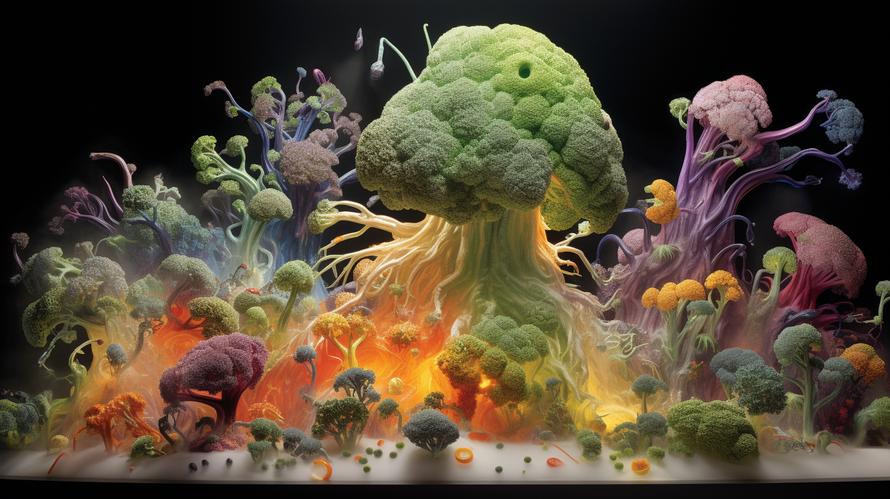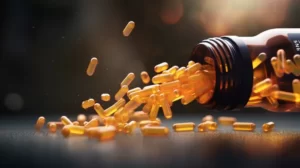In the quiet hush of the laboratory, amidst the glass vials and beeping machinery, a humble compound from the garden inches towards the frontlines of the battle against cancer. It’s no silver bullet, no miracle drug hawked at late-night infomercials, but rather a whisper of hope rustling through the leaves of our very own vegetable patches. It’s a story you likely haven’t heard before, one that begins with a simple cruciferous vegetable known for its characteristic pungent aroma and bitter bite – broccoli.
Broccoli, and other members of the cruciferous family such as cauliflower and Brussels sprouts, have been lauded for their health benefits for years. However, recent scientific discoveries have catapulted a specific constituent of these green edibles into the spotlight: sulforaphane. This naturally occurring compound has demonstrated astounding potential in obliterating cancer cells, marking a new chapter in oncological research.
Sulforaphane is a sulfur-rich compound found in high concentrations in broccoli sprouts, and to a lesser extent in mature broccoli. It is produced when the enzyme myrosinase transforms glucoraphanin, a glucosinolate precursor found in cruciferous vegetables, into sulforaphane upon damage to the plant, such as from chewing.
But what’s ground-breaking is the way sulforaphane goes about its business. It operates on a molecular level akin to a seasoned spy infiltrating enemy lines, targeting and impairing the function of cancer cells while largely sparing healthy cells. It’s a tactic that has not gone unnoticed among researchers.
Several studies have suggested that sulforaphane can intervene at different stages of cancer development. It acts as an anti-initiating agent, hindering carcinogens from mutating DNA. Moreover, it serves as an anti-proliferative agent, thwarting the unbridled growth of tumorous cells, and as an anti-metastatic agent, obstructing the migration of cancer to other regions of the body.
Peer-reviewed papers indicate sulforaphane’s ability to meddle with cancer cells’ survival by inducing apoptosis, a form of programmed cell death essential for stopping cancer progression. It’s also been shown to play a role in epigenetics, influencing gene expression without altering the DNA sequence — essentially convincing cancer cells to “behave” themselves.
Sulforaphane makes its incisions with such precision partly due to a process called histone deacetylase (HDAC) inhibition. HDACs are enzymes that cancer cells often use to hide from the body’s natural defenses, but sulforaphane blocks their activity, flagging the cancer cells for destruction by immune cells.
Though the research sounds promising, you might now be picturing yourself gulping down pounds of broccoli to reap these benefits. This is neither necessary nor advisable. The process of translating these findings from the bench to the bedside is a complex one, and scientists are working hard to determine effective, palatable doses that can be converted into potential treatments.
Furthermore, sulforaphane’s tiny molecular stature is a double-edged sword. While it can slip into cells with ease, it’s also easily degraded, making delivery into your system before it breaks down a significant hurdle. Researchers are exploring ways to encapsulate sulforaphane or use its precursor, glucoraphanin, to ensure it reaches the target tissues intact.
Until these developments reach fruition, what actionable advice can one glean from the current body of knowledge? First and foremost, integrating a variety of vegetables, particularly cruciferous ones, into your diet is an excellent start. Not only will you get a dose of sulforaphane, but also a medley of other cancer-fighting nutrients.
For those interested in optimizing sulforaphane intake, consider incorporating freshly sprouted broccoli seeds or sprouts into your diet. These youthful greens pack a more potent punch of sulforaphane per ounce than their mature counterparts. And a spritz of some raw mustard seed powder on your cruciferous veggies can offer a dose of myrosinase, the enzyme needed to unlock sulforaphane from its glucosinolate precursor.
If you’re ambitious, cultivating your own broccoli sprouts is a simple, cost-effective strategy to ensure a fresh supply. Look for high-quality, organic broccoli seeds specifically sold for sprouting, and with little more than a mason jar, clean water, and a few days of patience, you’ll have a crop of supercharged sprouts brimming with potential health benefits.
While we await more definitive research that could crystalize sulforaphane-based therapies, the consensus among scientists and nutritionists remains clear: a diet rich in plant-based foods—particularly those with known therapeutic compounds—is an invaluable ally in the maintenance of good health and the prevention of various diseases, including cancer.
It’s all too easy to dismiss the potential of our leafy green comrades in the fight against major diseases like cancer, but sulforaphane stands as a compelling reminder that sometimes, the mightiest powers come in the smallest of packages. As the narrative of sulforaphane unfolds before the diligent eyes of researchers worldwide, our plates could become not just a source of sustenance but a shield and a weapon against one of humanity’s most persistent foes.
Until science serves its final verdict on sulforaphane, relishing a hearty serving of broccoli may prove to be more than just a dutiful nod to good health—it could be a small yet strategic move in the grander tactical scheme of lifelong wellness.



